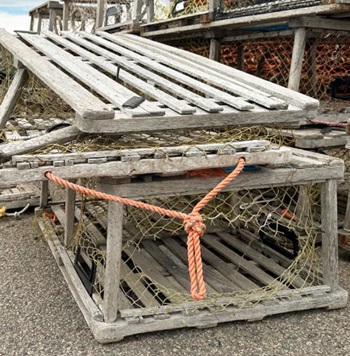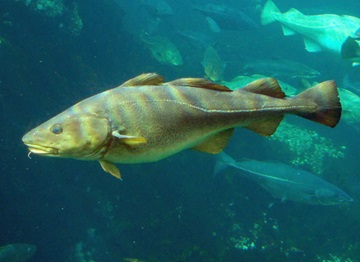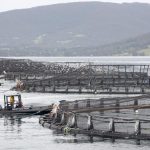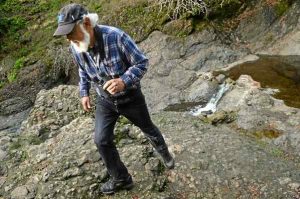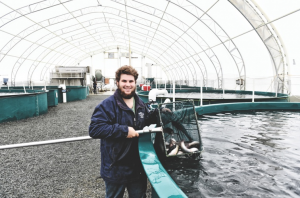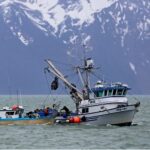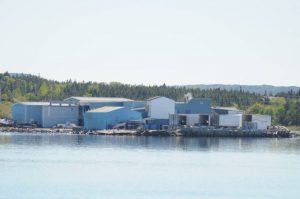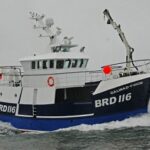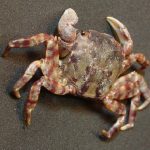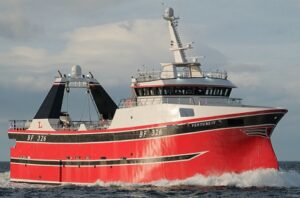Category Archives: Canada
Electric lobster boats: Bringing future resiliency to energy infrastructure
 It’s called The Sea Cucumber. A prototype diesel electric hybrid fishing boat made by Glas Ocean Electric in Nova Scotia. If you plug it in, it’ll charge overnight. It has 98 kilowatt hours, so you could drive to your fishing ground on diesel, operate for six to eight hours on electric power, then head home on diesel. “You can take your eight hour day now and replace six or seven of those hours with cheap electric power instead of diesel power,” The boat, which could produce fuel savings from 50 to 70 percent, was on display as part of a Nova Scotia government announcement of a new Fisheries and Aquaculture Energy Efficiency Innovation Fund for the province. Video, photos, more, >>CLICK TO READ<< 08:25
It’s called The Sea Cucumber. A prototype diesel electric hybrid fishing boat made by Glas Ocean Electric in Nova Scotia. If you plug it in, it’ll charge overnight. It has 98 kilowatt hours, so you could drive to your fishing ground on diesel, operate for six to eight hours on electric power, then head home on diesel. “You can take your eight hour day now and replace six or seven of those hours with cheap electric power instead of diesel power,” The boat, which could produce fuel savings from 50 to 70 percent, was on display as part of a Nova Scotia government announcement of a new Fisheries and Aquaculture Energy Efficiency Innovation Fund for the province. Video, photos, more, >>CLICK TO READ<< 08:25
DFO Rejects FFAW Working Group Proposal for Buddy Up in 2J3KL Northern Cod, Harvesters Forewarn of Offshore Draggers Coming
 Despite an overwhelming majority voting in favour of buddy-up in cod, late yesterday afternoon DFO advised the FFAW that buddy-up will not be implemented in 2J3KL for the 2024 season. Harvesters fear that DFO is failing to manage the fishery in a way that supports the continued economic success of coastal communities in Newfoundland and Labrador and warn that the Department is threatening to allow offshore draggers access this fishing season. “Owner-operator fish harvesters who rely on the cod fishery have systematically and democratically worked over the last several months to find ways to improve our northern cod stewardship fishery, for the economic feasibility of the 2J3KL fleet,” says FFAW-Unifor Greg Pretty. “This fleet determined that the way to move forward was approving buddy-up but including important criteria that would ensure the fishery lasts more than a few days,” Pretty explains. “Moreover, harvesters are very fearful that the Liberal Government is positioning themselves to give away the northern cod resource to offshore draggers this fishing season,” Pretty says. more, >>CLICK TO READ<< 14:23
Despite an overwhelming majority voting in favour of buddy-up in cod, late yesterday afternoon DFO advised the FFAW that buddy-up will not be implemented in 2J3KL for the 2024 season. Harvesters fear that DFO is failing to manage the fishery in a way that supports the continued economic success of coastal communities in Newfoundland and Labrador and warn that the Department is threatening to allow offshore draggers access this fishing season. “Owner-operator fish harvesters who rely on the cod fishery have systematically and democratically worked over the last several months to find ways to improve our northern cod stewardship fishery, for the economic feasibility of the 2J3KL fleet,” says FFAW-Unifor Greg Pretty. “This fleet determined that the way to move forward was approving buddy-up but including important criteria that would ensure the fishery lasts more than a few days,” Pretty explains. “Moreover, harvesters are very fearful that the Liberal Government is positioning themselves to give away the northern cod resource to offshore draggers this fishing season,” Pretty says. more, >>CLICK TO READ<< 14:23
Mi’kmaw fishermen say they’re being threatened, prevented from selling catch in Cape Breton
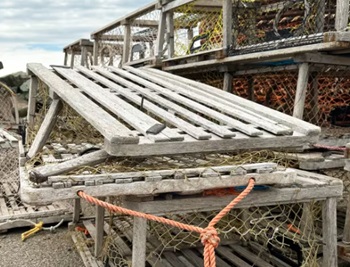 Some Mi’kmaw lobster fishermen say they’re still being prevented from earning a moderate livelihood, more than two weeks after the Department of Fisheries and Oceans began investigating allegations of trap tampering near Louisbourg, N.S. Last month, Eskasoni First Nation fisherman Charles Francis said 70 of his 178 traps were damaged. Since then, some Mi’kmaw fishermen say they have been threatened, denied fuel sales and mechanical work on their boats, and are being prevented from selling their catch by some people in or associated with the commercial fishery. “It’s pure racism,” said Michael Basque, the moderate livelihood fishery co-ordinator for Unama’ki, which is the Mi’kmaw name for Cape Breton. more, >>CLICK TO READ<< 07:50
Some Mi’kmaw lobster fishermen say they’re still being prevented from earning a moderate livelihood, more than two weeks after the Department of Fisheries and Oceans began investigating allegations of trap tampering near Louisbourg, N.S. Last month, Eskasoni First Nation fisherman Charles Francis said 70 of his 178 traps were damaged. Since then, some Mi’kmaw fishermen say they have been threatened, denied fuel sales and mechanical work on their boats, and are being prevented from selling their catch by some people in or associated with the commercial fishery. “It’s pure racism,” said Michael Basque, the moderate livelihood fishery co-ordinator for Unama’ki, which is the Mi’kmaw name for Cape Breton. more, >>CLICK TO READ<< 07:50
Fishery co-op plans on hold after province freezes processing licences
 June 13th, 2024 – The Fisheries Protective Co-operative has put organizing efforts on hold following a decision by the provincial government to institute a freeze on the issuance of new fish processing licences. “We hit a wall that we didn’t see coming,” says organizer Ryan Cleary. “The plan is to move forward when the freeze is eventually lifted,” added Merv Wiseman, another key co-op organizer. The FPC was preparing an application to process groundfish at a seal-processing facility in Fleur de Lys on the Baie Verte Peninsula when an official with provincial Fisheries revealed this week that a licence freeze is in effect. more, >>CLICK TO READ<< 09:12
June 13th, 2024 – The Fisheries Protective Co-operative has put organizing efforts on hold following a decision by the provincial government to institute a freeze on the issuance of new fish processing licences. “We hit a wall that we didn’t see coming,” says organizer Ryan Cleary. “The plan is to move forward when the freeze is eventually lifted,” added Merv Wiseman, another key co-op organizer. The FPC was preparing an application to process groundfish at a seal-processing facility in Fleur de Lys on the Baie Verte Peninsula when an official with provincial Fisheries revealed this week that a licence freeze is in effect. more, >>CLICK TO READ<< 09:12
Lobster fishers want to see a crack down on poaching in southwestern Nova Scotia
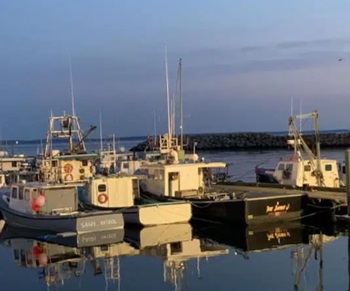 The issue was raised during a meeting in Yarmouth among industry members and the Department of Fisheries and Oceans (DFO). They’re worried more moderate livelihood fishing will dominate St. Mary’s Bay. First Nations fishers maintain their Treaty rights to fish. DFO has not authorized that fishery, but they do allow some Food, Social and Ceremonial licenses. Colin Sproul with the Unified Fisheries Conservation Alliance says catches were low in the bay during the fall season. “Everybody in southwestern Nova Scotia knows why that is. I think it’s incumbent on the government to act now, before lobster fishing in St. Mary’s Bay is a thing of the past,” said Sproul. more, >>CLICK TO READ<< 05:53
The issue was raised during a meeting in Yarmouth among industry members and the Department of Fisheries and Oceans (DFO). They’re worried more moderate livelihood fishing will dominate St. Mary’s Bay. First Nations fishers maintain their Treaty rights to fish. DFO has not authorized that fishery, but they do allow some Food, Social and Ceremonial licenses. Colin Sproul with the Unified Fisheries Conservation Alliance says catches were low in the bay during the fall season. “Everybody in southwestern Nova Scotia knows why that is. I think it’s incumbent on the government to act now, before lobster fishing in St. Mary’s Bay is a thing of the past,” said Sproul. more, >>CLICK TO READ<< 05:53
Explorer Ernest Shackleton’s last ship found off Labrador’s south coast, says expedition
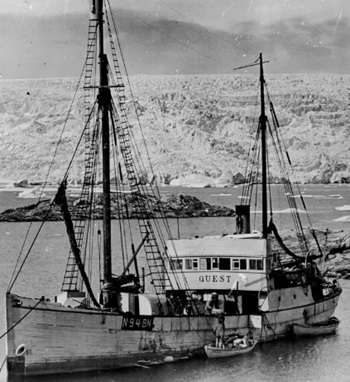 The last vessel helmed by famed Anglo-Irish explorer Sir Ernest Shackleton, lost for more than 60 years, has been discovered on the ocean floor, less than half a kilometre off Labrador’s south coast, says the Royal Canadian Geographical Society. Expedition leader John Geiger, the society’s CEO, said the wreck was found in the Labrador Sea, lying at a depth of 390 metres. He added it was in the vicinity of where the ship had been reported to have sunk. ”This is a very important vessel. Historically it was the final expedition ship of Sir Ernest Shackleton,” he said Wednesday morning at a news conference at the Marine Institute in St. John’s. “As many of you know, he died on this ship on his final expedition of the Shackleton–Rowett expedition, which set out to initially explore Canada.” Using sonar operated by Marine Institute staff, the international team say they found the Quest off the coast near Battle Harbour, on Sunday, five days into its expedition, which left June 5. more, >>CLICK TO READ<< 12:24
The last vessel helmed by famed Anglo-Irish explorer Sir Ernest Shackleton, lost for more than 60 years, has been discovered on the ocean floor, less than half a kilometre off Labrador’s south coast, says the Royal Canadian Geographical Society. Expedition leader John Geiger, the society’s CEO, said the wreck was found in the Labrador Sea, lying at a depth of 390 metres. He added it was in the vicinity of where the ship had been reported to have sunk. ”This is a very important vessel. Historically it was the final expedition ship of Sir Ernest Shackleton,” he said Wednesday morning at a news conference at the Marine Institute in St. John’s. “As many of you know, he died on this ship on his final expedition of the Shackleton–Rowett expedition, which set out to initially explore Canada.” Using sonar operated by Marine Institute staff, the international team say they found the Quest off the coast near Battle Harbour, on Sunday, five days into its expedition, which left June 5. more, >>CLICK TO READ<< 12:24
N.S. spends $6.5M on fund to reduce emissions from boats, commercial fisheries
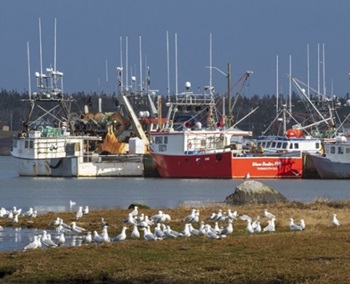 Nova Scotia is seeking to cut down on greenhouse gas emissions from the seafood sector with a greenhouse gas emissions. According to a news release from the province, the Fisheries and Aquaculture Energy Efficiency Innovation Fund will support initiatives to reduce emissions from boats, buildings, aquaculture operations and commercial fisheries. “Our industries are already leaders in fighting climate change through the investments they’re making to reduce energy use,” said Kent Smith, minister of fisheries and aquaculture, in the release. more, >>CLICK TO READ<< 07:18
Nova Scotia is seeking to cut down on greenhouse gas emissions from the seafood sector with a greenhouse gas emissions. According to a news release from the province, the Fisheries and Aquaculture Energy Efficiency Innovation Fund will support initiatives to reduce emissions from boats, buildings, aquaculture operations and commercial fisheries. “Our industries are already leaders in fighting climate change through the investments they’re making to reduce energy use,” said Kent Smith, minister of fisheries and aquaculture, in the release. more, >>CLICK TO READ<< 07:18
Athearn Marine Agency Boat of the Week: 36′ Wayne Beal Gillnetter/Lobster Boat
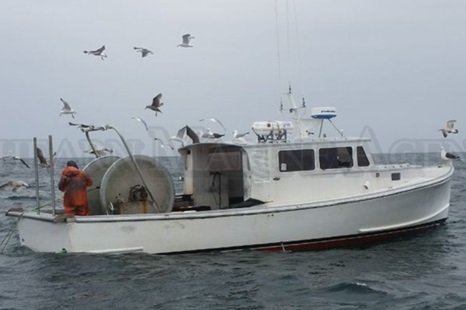 To review specifications, information, and 10 photos’, >click here<, To see all the boats in this series, >click here< 06:07
To review specifications, information, and 10 photos’, >click here<, To see all the boats in this series, >click here< 06:07
Atlantic herring suffering in warming Gulf of St. Lawrence
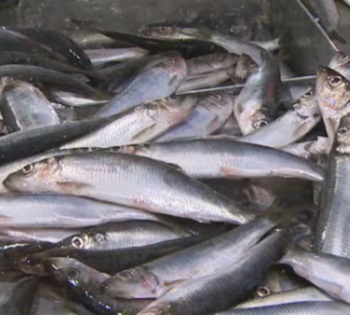 Decades of research show a slow decline in herring stocks in the Gulf of St. Lawrence, and scientists are linking that decline to waters that are warming with climate change. Recent research from NASA found that about 90 per cent of global warming is occurring in the ocean. In the Gulf of St. Lawrence, Joël Chassé, an oceanographer with Fisheries and Oceans Canada, said 11 of 12 months last year had warmer than normal surface temperatures, and he expects a similar pattern this year. “Fishermen in northern New Brunswick, the Baie des Chaleur region, were having difficulty finding the fish,” said Jacob Burbank, a researcher in fish ecology with Fisheries and Oceans Canada. “They weren’t seeing Atlantic herring where they normally would see Atlantic herring. They kept waiting for them to come in for their spawning and they just didn’t see them.” more, >>CLICK TO READ<< 11:40
Decades of research show a slow decline in herring stocks in the Gulf of St. Lawrence, and scientists are linking that decline to waters that are warming with climate change. Recent research from NASA found that about 90 per cent of global warming is occurring in the ocean. In the Gulf of St. Lawrence, Joël Chassé, an oceanographer with Fisheries and Oceans Canada, said 11 of 12 months last year had warmer than normal surface temperatures, and he expects a similar pattern this year. “Fishermen in northern New Brunswick, the Baie des Chaleur region, were having difficulty finding the fish,” said Jacob Burbank, a researcher in fish ecology with Fisheries and Oceans Canada. “They weren’t seeing Atlantic herring where they normally would see Atlantic herring. They kept waiting for them to come in for their spawning and they just didn’t see them.” more, >>CLICK TO READ<< 11:40
Canadian Independent Redfish Harvesters Trash Minister’s Harvest Plan: Disconnect Has Never Been More Evident
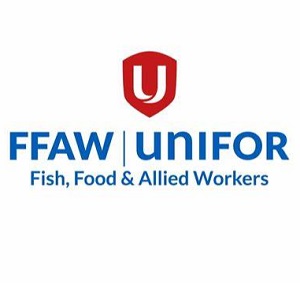 Following the announcement of the Unit 1 Redfish Management Plan and a follow-up to the Redfish Advisory Committee on Wednesday, the 3Pn4R Advisory Committee convened on Thursday night to review the proceedings. The consensus was unanimous in support of a resolution from FFAW President Greg Pretty: “Shred the document and appoint a recovery team including industry experts to ensure we have a plan that can work.” Earlier this spring, the original announcement made by Minister Lebouthillier gave away nearly 60% of the Canadian redfish quota to the corporate fleet, despite the inshore, owner-operator fleet having taken the lead on science and sustainability measures in recent years. New measures announced this week further limit harvesters by implementing unreasonable seasons, depths, gear, observer coverage, and by-catch rules. The restrictions effectively limit owner-operator participation from the inshore fleet. more, >>CLICK TO READ<< 10:11
Following the announcement of the Unit 1 Redfish Management Plan and a follow-up to the Redfish Advisory Committee on Wednesday, the 3Pn4R Advisory Committee convened on Thursday night to review the proceedings. The consensus was unanimous in support of a resolution from FFAW President Greg Pretty: “Shred the document and appoint a recovery team including industry experts to ensure we have a plan that can work.” Earlier this spring, the original announcement made by Minister Lebouthillier gave away nearly 60% of the Canadian redfish quota to the corporate fleet, despite the inshore, owner-operator fleet having taken the lead on science and sustainability measures in recent years. New measures announced this week further limit harvesters by implementing unreasonable seasons, depths, gear, observer coverage, and by-catch rules. The restrictions effectively limit owner-operator participation from the inshore fleet. more, >>CLICK TO READ<< 10:11
GCIFA calls for seal population controls
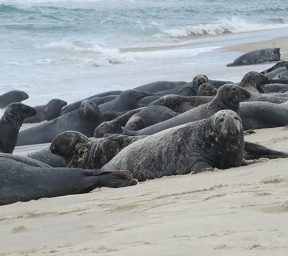 The head of the Guysborough County Inshore Fisherman’s Association (GCIFA) is calling on the federal government to bring in aggressive, new “controls” on millions of hungry grey and harp seals whose sheer numbers, she says, are weakening the east coast fishery. GCIFA Executive Director Ginny Boudreau made the comment to The Journal in an interview after the release last week of the Standing Senate Committee on Fisheries and Oceans’ report, Sealing the Future, which criticized federal authorities for mismanaging the rising numbers of the animals over the years and called for an increase in their annual harvest. “It’s huge that scientists are now considering the impact of [the more than] seven million seals in the Gulf of Saint Lawrence and the [nearly] 500,000 here in the Scotia-Fundy region,” Boudreau said. “It’s only ever been about the impact of the harvesters. As more accurate data comes in, I think we’re going to see the seals as the main predator.” more, >>CLICK TO READ<< 10:42
The head of the Guysborough County Inshore Fisherman’s Association (GCIFA) is calling on the federal government to bring in aggressive, new “controls” on millions of hungry grey and harp seals whose sheer numbers, she says, are weakening the east coast fishery. GCIFA Executive Director Ginny Boudreau made the comment to The Journal in an interview after the release last week of the Standing Senate Committee on Fisheries and Oceans’ report, Sealing the Future, which criticized federal authorities for mismanaging the rising numbers of the animals over the years and called for an increase in their annual harvest. “It’s huge that scientists are now considering the impact of [the more than] seven million seals in the Gulf of Saint Lawrence and the [nearly] 500,000 here in the Scotia-Fundy region,” Boudreau said. “It’s only ever been about the impact of the harvesters. As more accurate data comes in, I think we’re going to see the seals as the main predator.” more, >>CLICK TO READ<< 10:42
Athearn Marine Agency Boat of the Week: 40′ X 16′ Novi Lobster/Gillnetter
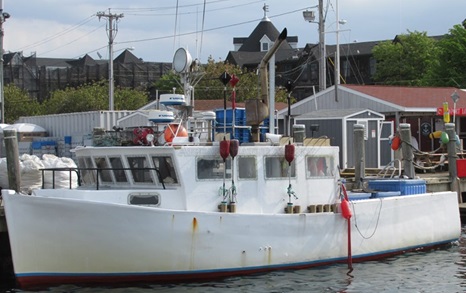 To review specifications, information, and 28 photos’, >click here<, To see all the boats in this series, >click here< 07:32
To review specifications, information, and 28 photos’, >click here<, To see all the boats in this series, >click here< 07:32
Meet one of the young faces of Steveston’s spot prawn industry
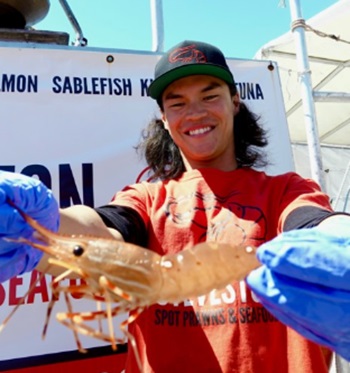 The best part of spot prawn season, according to Reid Thornton, is the “tight-knit” community. Now in his fifth season, the 21-year-old Steveston resident started working in the industry fresh out of high school. Thornton is the sales manager and a deckhand at Steveston Spot Prawns & Seafood. With the exception of Thornton himself, most employees in the company are third-generation Japanese-Canadian fishermen. He had heard of spot prawns prior to starting his job, but he had no idea about the extent of its popularity. more, >>CLICK TO READ<< 06:38
The best part of spot prawn season, according to Reid Thornton, is the “tight-knit” community. Now in his fifth season, the 21-year-old Steveston resident started working in the industry fresh out of high school. Thornton is the sales manager and a deckhand at Steveston Spot Prawns & Seafood. With the exception of Thornton himself, most employees in the company are third-generation Japanese-Canadian fishermen. He had heard of spot prawns prior to starting his job, but he had no idea about the extent of its popularity. more, >>CLICK TO READ<< 06:38
Inuit harvesters threaten legal action
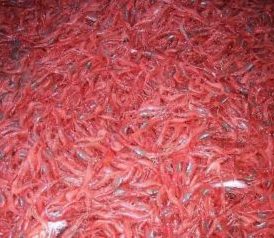 Monday, June 3rd, 2024 – Inuit harvesters from northern Labrador are threatening to take the Nunatsivut government to court if their 2024 inshore shrimp allocations aren’t restored, and an investigation ordered into why they were reassigned to an offshore factory-freezer trawler. “The spirit and intent of a communal licence is to provide local inshore Inuit with jobs and connect them to their culture and traditions, and that has been broken,” says Lisa Blandford, an Inuit harvester on behalf of the group. more, >>CLICK TO READ<< 10:21
Monday, June 3rd, 2024 – Inuit harvesters from northern Labrador are threatening to take the Nunatsivut government to court if their 2024 inshore shrimp allocations aren’t restored, and an investigation ordered into why they were reassigned to an offshore factory-freezer trawler. “The spirit and intent of a communal licence is to provide local inshore Inuit with jobs and connect them to their culture and traditions, and that has been broken,” says Lisa Blandford, an Inuit harvester on behalf of the group. more, >>CLICK TO READ<< 10:21
Commercial redfish fishery in Gulf of St. Lawrence expected to resume later this month
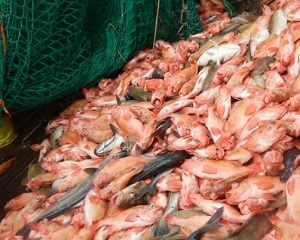 The Department of Fisheries and Oceans says the reopening of the redfish fishery in the Gulf of St. Lawrence could begin as early as June 15 and has announced the total allowable catch will be 60,000 tonnes for 2024-25. DFO announced the changes in a statement Friday. The department had said previously that the minimum allowable catch for the fishery would be 25,000 tonnes, but had not provided a cap. The commercial redfish fishery closed in 1995 over stock concerns. more, >>CLICK TO READ<< 13:26
The Department of Fisheries and Oceans says the reopening of the redfish fishery in the Gulf of St. Lawrence could begin as early as June 15 and has announced the total allowable catch will be 60,000 tonnes for 2024-25. DFO announced the changes in a statement Friday. The department had said previously that the minimum allowable catch for the fishery would be 25,000 tonnes, but had not provided a cap. The commercial redfish fishery closed in 1995 over stock concerns. more, >>CLICK TO READ<< 13:26
DFO Doubles Down on Redfish Giveaway: NL MPs Fail to Step-Up for Provincial Fishery
 Late yesterday evening, DFO released the 2024-2025 Management Plan for redfish. The cowardly move came after the close of NL business hours and doubled down by taking owner-operator resources and handing them off to corporations. Earlier this spring, the original announcement made by Minister Lebouthillier gave away nearly 60% of the Canadian redfish quota to the corporate fleet, despite the inshore, owner-operator fleet having taken the lead on science and sustainability measures in recent years. With the Gulf shrimp fishery all but closed and non-shrimpers waiting for redfish to return, this is another blow to a group that’s been in survival mode for the last several years. “Once again, FFAW-Unifor members have been maligned by our two Ministerial Marionettes, Seamus O’Regan and Gudie Hutchings,” said FFAW-Unifor President Greg Pretty. “Sadly, their strings continue to be plucked by the Offshore Groundfish Oligarchy. >>CLICK TO READ<<11:49
Late yesterday evening, DFO released the 2024-2025 Management Plan for redfish. The cowardly move came after the close of NL business hours and doubled down by taking owner-operator resources and handing them off to corporations. Earlier this spring, the original announcement made by Minister Lebouthillier gave away nearly 60% of the Canadian redfish quota to the corporate fleet, despite the inshore, owner-operator fleet having taken the lead on science and sustainability measures in recent years. With the Gulf shrimp fishery all but closed and non-shrimpers waiting for redfish to return, this is another blow to a group that’s been in survival mode for the last several years. “Once again, FFAW-Unifor members have been maligned by our two Ministerial Marionettes, Seamus O’Regan and Gudie Hutchings,” said FFAW-Unifor President Greg Pretty. “Sadly, their strings continue to be plucked by the Offshore Groundfish Oligarchy. >>CLICK TO READ<<11:49
DFO issues warnings about lobster trap tampering in Nova Scotia
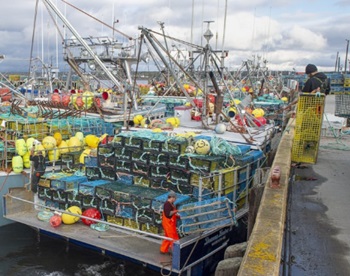 The federal Fisheries Department is investigating reports of gear tampering in lobster fishing areas in eastern Nova Scotia. The department issued a statement late Thursday saying Indigenous fishers taking part in officially sanctioned moderate livelihood fisheries have reported tampering in two fishing areas, as have non-Indigenous commercial fishers. The lobster fishing areas in question are 26A, which includes the eastern half of the Northumberland Strait, and area 27, which extends from the tip of Cape Breton near Meat Cove to an area on the east side of the island near Garbarus. more, >>CLICK TO READ<< 13:55
The federal Fisheries Department is investigating reports of gear tampering in lobster fishing areas in eastern Nova Scotia. The department issued a statement late Thursday saying Indigenous fishers taking part in officially sanctioned moderate livelihood fisheries have reported tampering in two fishing areas, as have non-Indigenous commercial fishers. The lobster fishing areas in question are 26A, which includes the eastern half of the Northumberland Strait, and area 27, which extends from the tip of Cape Breton near Meat Cove to an area on the east side of the island near Garbarus. more, >>CLICK TO READ<< 13:55
Catches up as LFA 33/34 season ends
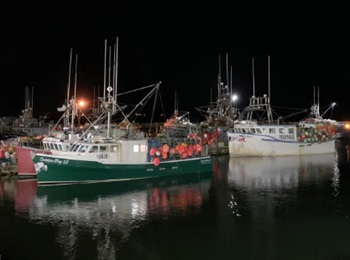 Catches are up as lobster season comes to a close. Fishers will haul up their traps Friday for the last time until late November. Dan Fleck is the executive director of the Brazil Rock 33/34 Lobster Association. He says prices have fallen to over eight dollars a pound. “The past several weeks, catch rates have increased. It’s believed this is due to the water warming up. We believe the lobsters were there in the fall, but they weren’t crawling because the water was so cold,” said Fleck. more, >>CLICK TO READ<< 08:01
Catches are up as lobster season comes to a close. Fishers will haul up their traps Friday for the last time until late November. Dan Fleck is the executive director of the Brazil Rock 33/34 Lobster Association. He says prices have fallen to over eight dollars a pound. “The past several weeks, catch rates have increased. It’s believed this is due to the water warming up. We believe the lobsters were there in the fall, but they weren’t crawling because the water was so cold,” said Fleck. more, >>CLICK TO READ<< 08:01
Storm Brewing over French Halibut Fishery in Atlantic Canada
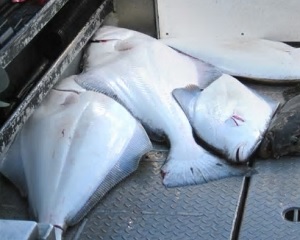 The Canadian halibut industry is accusing France of seeking an exorbitant share of the fishery in negotiations with Canada on quotas for the valuable groundfish that migrate across the jurisdictions of both countries. Canadian fishermen from Nova Scotia to Nunavut would be the losers if France prevails, said Bruce Chapman, executive director of the Atlantic Halibut Council, representing both inshore and offshore Canadian harvesters. French territorial waters extend into the Atlantic from the islands of Saint Pierre and Miquelon, 25 kilometres from the southern coast of Newfoundland and Labrador. more, >>CLICK TO READ<< 06:41
The Canadian halibut industry is accusing France of seeking an exorbitant share of the fishery in negotiations with Canada on quotas for the valuable groundfish that migrate across the jurisdictions of both countries. Canadian fishermen from Nova Scotia to Nunavut would be the losers if France prevails, said Bruce Chapman, executive director of the Atlantic Halibut Council, representing both inshore and offshore Canadian harvesters. French territorial waters extend into the Atlantic from the islands of Saint Pierre and Miquelon, 25 kilometres from the southern coast of Newfoundland and Labrador. more, >>CLICK TO READ<< 06:41
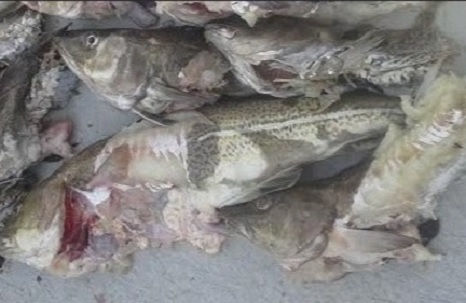
A Very Dire Situation: Downward spiral for Atlantic cod continues in Gulf of St. Lawrence
The latest assessment of Atlantic cod fish stocks in the Gulf of St. Lawrence continues to paint a bleak picture for the future of the species. Fisheries and Oceans Canada issued a warning five years ago saying extinction of the species in the gulf was not just possible, but probable. The first assessment since then has been released. “We are not seeing any recovery of the spawning stock biomass of that stock. It is still experiencing really high levels of natural mortality, especially at the adult stage of life,” said federal Fisheries and Oceans biologist Daniel Ricard. Between 60 and 70 per cent of cod in the southern gulf do not survive beyond age five and are likely being eaten by the huge herds of grey seals in the region, Ricard said. more, >>CLICK TO READ<< 11:17
Athearn Marine Agency Boat of the Week: 45′ Novi Clammer/Scalloper/Lobster Boat, Cat 3408
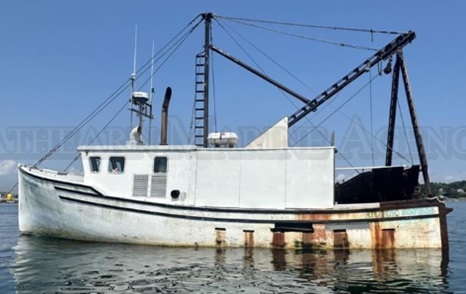 To review specifications, information, and 9 photos’, >click here<, To see all the boats in this series, >click here< 06:18
To review specifications, information, and 9 photos’, >click here<, To see all the boats in this series, >click here< 06:18
Lobsters prices fall. Crates of crustaceans pile up on Cape Breton
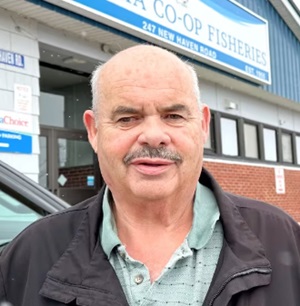 There are so many lobsters ready for processing or live sale in some eastern Cape Breton harbours that they’re being stored temporarily in large flotillas of plastic crates. Some seafood buyers have stopped buying altogether and others are implementing daily limits on the amount of lobster they will buy. Fishermen worry the oversupply is driving down the price and while some in the industry say it could be a sign of longer term problems, one buyer says the backlog is evidence that lobster conservation efforts are working, and it will ease off in a couple of weeks. “Our processing facility is maximized daily, seven days a week and our holding facility is pretty darn full as of Saturday night,” said Osborne Burke, general manager of Victoria Co-operative Fisheries in New Haven, northern Cape Breton. more, >>CLICK TO READ<< 11:41
There are so many lobsters ready for processing or live sale in some eastern Cape Breton harbours that they’re being stored temporarily in large flotillas of plastic crates. Some seafood buyers have stopped buying altogether and others are implementing daily limits on the amount of lobster they will buy. Fishermen worry the oversupply is driving down the price and while some in the industry say it could be a sign of longer term problems, one buyer says the backlog is evidence that lobster conservation efforts are working, and it will ease off in a couple of weeks. “Our processing facility is maximized daily, seven days a week and our holding facility is pretty darn full as of Saturday night,” said Osborne Burke, general manager of Victoria Co-operative Fisheries in New Haven, northern Cape Breton. more, >>CLICK TO READ<< 11:41
First Nations advocates resolve to put traditional fishing rights under international spotlight
 First Nations delegates from Japan, Taiwan, Canada, Alaska, and Australia have met on the lands of Walbunga Yuin people on the NSW far south coast for the International Indigenous Fishing Symposium. Indigenous fishing rights activists in NSW are working with First Nations groups around the world to put a global spotlight on the battle to protect traditional fishing rights and cultural practices. The groups plan to work together to lobby the United Nations. more, >>CLICK TO READ<< 07:56
First Nations delegates from Japan, Taiwan, Canada, Alaska, and Australia have met on the lands of Walbunga Yuin people on the NSW far south coast for the International Indigenous Fishing Symposium. Indigenous fishing rights activists in NSW are working with First Nations groups around the world to put a global spotlight on the battle to protect traditional fishing rights and cultural practices. The groups plan to work together to lobby the United Nations. more, >>CLICK TO READ<< 07:56
Inuit inshore harvesters of northern Labrador have scheduled a protest for Tuesday morning, May 28th, at 8 a.m.
 Inuit inshore harvesters of northern Labrador have scheduled a protest for Tuesday morning, May 28th, at 8 a.m. (8:30 a.m. in Newfoundland) outside all Nunatsiavut Government buildings in the province. “We encourage all Inuit harvesters, their families, and non-harvesters alike to support us against this grave injustice,” says organizer and Inuit harvester Lisa Blandford. In past years the Nunatsiavut government has distributed its annual federal allocation of shrimp off northern Labrador to more than 20 inshore harvesters or designates. This year, however, seven Inuit harvesters say the Nunatsiavut government has denied them a 2024 share of northern shrimp quota in favour of an Inuit designate with a factory-freezer trawler, displacing as many as 40 inshore harvesters along the north Labrador coast. The inshore harvesters have also raised questions of conflict of interest involving current and past members of the Nunatsiavut government and have DFO documentation from 2003 that dictates shrimp quota to be assigned specifically to the inshore. DFO is expected to open the shrimp fishery off northern Labrador in fishing zones 4 and 5 any day. Contact Lisa Blandford: 709 897 7531 – 13:20
Inuit inshore harvesters of northern Labrador have scheduled a protest for Tuesday morning, May 28th, at 8 a.m. (8:30 a.m. in Newfoundland) outside all Nunatsiavut Government buildings in the province. “We encourage all Inuit harvesters, their families, and non-harvesters alike to support us against this grave injustice,” says organizer and Inuit harvester Lisa Blandford. In past years the Nunatsiavut government has distributed its annual federal allocation of shrimp off northern Labrador to more than 20 inshore harvesters or designates. This year, however, seven Inuit harvesters say the Nunatsiavut government has denied them a 2024 share of northern shrimp quota in favour of an Inuit designate with a factory-freezer trawler, displacing as many as 40 inshore harvesters along the north Labrador coast. The inshore harvesters have also raised questions of conflict of interest involving current and past members of the Nunatsiavut government and have DFO documentation from 2003 that dictates shrimp quota to be assigned specifically to the inshore. DFO is expected to open the shrimp fishery off northern Labrador in fishing zones 4 and 5 any day. Contact Lisa Blandford: 709 897 7531 – 13:20






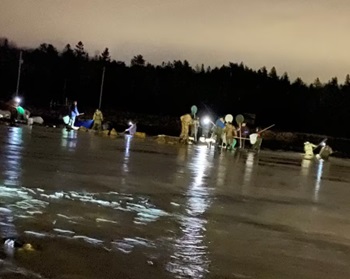
 06:32
06:32
